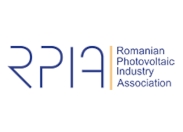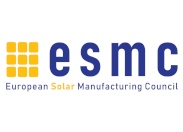As it is known, in the autumn of 2020 there was a five-time overapplication for the so-called METÁR tender issued by the Hungarian Energy and Utilities Regulatory Authority (MEKH) for subsidized electricity production from renewable energy sources. About 270 applications were submitted for the tender, a total of 179 were below 1 MW, out of which 107 were below 0.5 MW. In the category of less than 1 MW, 30 of the applying power plants can win based on the fact at what price they undertake to sell the produced electricity – provided that all of them submitted a faultless offer. But what prices were offered?
We had already got amazed a few months ago at the extremely low bids of the year 2019. If we think it over with common sense, projects implemented at such a selling price, aggravated by various additional costs, can at best reach break-even point or generate very modest profit, but even so the return period of the investment is extended. However, the bids announced at the end of October 2020 are beyond or rather below imagination.
In addition to the low offer price of HUF 21 / kWh, which was regarded low already this summer, the bids also included a price of HUF 18, and the lowest bid was HUF 16.18. The question arises: is it really worthwhile for the bidder to offer electricity at such a low price, if practically only 12 HUF of the selling price charged with the balancing energy fee and the brokerage commission remains in his pocket for every kWh?
Has the Hungarian market gone crazy?
If we compare the results of the German solar energy tender with the Hungarian one, we can conclude that the domestic market has gone crazy. In Germany, the utility-scale solar tender attracted 163 bids for 675 MW of generation capacity, out of which 75 were selected with a total capacity of 258 MW. Half of the approved projects took place in Bavaria, and the final prices for the electricity to be produced ranged from 0.0480 to 0.0539 / kWh on average at EUR 0.0522, in line with previous rounds of tenders of this year, with an average price of EUR 0.0501-0.0527. / kWh. Let's count! 0.0527 = approximately HUF 19.23, and no reduction item has been subtracted from this selling price yet.
What is the reason for the extreme optimism in our country? We are trying to find an answer to the extremely low bids submitted for the METÁR tender.
If we take a look at the sales prices of the energy exchange, we can see that at the time of submitting the tender it was around HUF 22.6 / kWh. (Don’t let yourself be deceived by the HUF 14.5 / kWh price in early November, which is clearly due to the impact of the Covid-19 pandemic.) Of course, the HUPX price is changeable, but it still seems pointless to bid lower than the stock-weighted prices. That is, those who originally offered electricity at this fixed price (obviously, the balancing energy cost reduces both prices equally, so we will not deal with it separately) were still “at their money”, while those who would have offered it for HUF 16.18 could have paid the difference. But did the ones who “took” the tender at such a low price win the war as well in addition to the battle?
There are several explanations for the extremely low prices. Let's see the possibilities one by one!
Among the first we can list the business routine: the company submitting the application follows the roulette player logic which says if it has won so far on business, it will win in the future as well. (This is how casinos work: we know it well that in the end, the player usually loses everything!) However, just because a model worked in one project in the past, it is not certain that it will in another one, too. A typical example of this is the real estate bubble phenomenon of the year 2008 in the United States. The real estate business had been regarded as a safe investment for many years, and shrewd businessmen had been able to make and accumulate a fortune by buying and selling real estates. But in 2008, due to the financial crisis, the market went down in a few weeks and the acquired properties could only be sold at a severe loss.
Forgotten costs
We have already mentioned the costs omitted (forgotten?) to be included in the business plan: the balancing energy fee (currently HUF 3-4 / kWh), the fee of the electricity traders, the scheduling fee, investment and operating costs that are difficult to calculate.
The optimism of the bidder offering the price of HUF 16.18 is even more unjustified in the light of the volatility of the HUF: at the beginning of August (that is, during the preparation of the METÁR tenders) one EUR was worth 342 HUF, on October 15, at the deadline for submitting the tender it was HUF 365, and when the submitted tenders were published, the exchange rate of the Euro was already HUF 369! This process which is unfavourable for us is even more outstanding if we examine it in a one-year or even five-year time interval: in the same period of 2016, one Euro was worth HUF 313 HUF, and in November 2019 it was HUF 336. Currently, the exchange rate is around HUF 362 - will the project pay off even so if it reaches 400? After all, the costs of the investment are paid by the investor in EUR, while the income is received in HUF, so inflation in itself takes a large amount of the potential profit. The METÁR tender price is calculated 1% below the annual inflation, that is, for example in a 10-year cycle, there will already be a very significant 10% inflated income. It is easy to calculate that if we take into account the exchange rates of the last year, the costs will increase by 10-12% only due to the depreciation of the HUF, but after the one percent deducted from the inflation rate, the actual sales growth may be only 2-3%.

MNB.hu EUR / HUF exchange rate chart between 5 August 2015 and 5 November 2020
We cannot leave unnoticed the fact in what market environment those need get on with who invest in renewable energy: the legislation has changed at least ten times since 2016, and it cannot be said that it has provided an increasingly easier conditions for the sector. Regulating the cooperation with electricity suppliers, on the other hand, is quite scanty - no one reimburses the owner of the solar park for the cost of an unexpected power outage. This can only be managed for a half-megawatt project, but for a 50 MW project, it can overturn the entire balance circle. Insurance would be needed to manage this, however, this is not yet available.
Vulnerable economy
The Covid-19 pandemic has made the vulnerability of the Hungarian economy more visible than ever before: from one day to the other, complete sectors have collapsed, and service and supply chains have been broken off. The effects of climate change have become unpredictable: anyone planning a solar park must also take into account extreme weather conditions. It is unpredictable where energy prices will head for, whether there will be an increase, and if so, how much; whether the scheduling group or the electricity trader will go bankrupt and insolvent.
The prices of raw materials used in investments rose again in 2020, just as did the prices of wages and services as well as operating costs: solar panels, as opposed to public belief, did not become much cheaper, but their prices are fluctuating, while the prices of steel and metal structures clearly rose. On top of all, the areas suitable for implementing solar parks have become extremely expensive: what was offered for HUF 800,000 per hectare in 2016 will start at HUF 6 million per hectare in 2020, and the upper limit may even be the starry sky. The joy felt due to land acquisitions is not clear either: it is overshadowed by the high land protection contribution and the conflict with the agricultural lobby.
Yet, why (and to whom) is this market attractive?
So there is little chance that a Hungarian investor will seize the opportunity to invest in a METÁR-winning project. How attractive is the Hungarian market to a foreign investor? Looking from abroad, even with the best goodwill, the Hungarian investment is an unrefined diamond rather than a real gem. The bank financing process is slow and the sector budget is tight. It has not been typical so far either that foreign investors brought in fresh money, they have made Hungarian banks finance the project instead. And anyway, where will a banking sector budget come from for a 50 MW project? The situation is exacerbated by the fact that the Hungarian economy has a very limited the scope for action: an intensive capital market is missing, so it is not possible to raise money to compensate for the loss by issuing shares, such as for example in the American market.
For some reason, however, tenders worth HUF 16-18 were submitted, and among these even a project with a foreign investor can be found. So let's see some arguments for low bids as well!
What are the arguments for it?
There is rather slight chance that no unexpected chance will occur during the life of the project - in this case it is a modest but secure income if (for example) a guaranteed purchase of HUF 18 / kWh of electricity (expressed in numbers: at a price of HUF 18 the income is about HUF 4).
Let’s take a scenario that takes into account a return on equity: in the case of 10% equity, a return on equity of up to 10% can be achieved - at least if we take into account a return period of 20 years (this can be achieved that in 10 years the project owner will take out another 10-year loan to repay the remaining part of the existing loan). However, such a long run-up involves serious risks: it is not known, for example, how much money must be spent on renovation and maintenance in two decades. Development has accelerated amazingly, who can guarantee that no new, fresh technology will appear in the “shadow” of which no one will finance the remaining loan after 10 years? The return on equity is also ensured by a model where a fund invests fresh money in the project - in this case, however, there is a possibility that although there will be a return on equity, the investor loses the remaining capital some time between 10 - 20 years due to a great number of unknown risk factors.
In the footsteps of generous investors
Tenders would return with extremely low planned construction costs and low interest rates. Who is it worth all this? It’s clear that development and construction companies make profit on the deal, but is there an investor who gets down to a high-risk investment which promises a return of 3-5%? If we look at the outlined situation in good faith, the figure of an investor emerges who can constantly raise fresh money and is not held accountable for completely losing the capital invested in the 20-year cycle. There is no such an investor, or is there one? We must say, however strange it sounds, but still, there is!
Let’s see what makes the investor behind a seemingly unprofitable project so unnecessarily generous! It is possible that a particular investor will compile a portfolio. In this case, there is indeed a stage of construction where money is “burnt” to expand the portfolio. Well, of course, this can hardly be done with domestic investment funds, so some international funds may be behind the investment. As a result of the process, however, the larger domestic solar parks will inadvertently get into foreign ownership! In the long term, this is certainly not a lucky situation and will not spin our economy either.
Sad conclusion
Besides this, other explanations are also possible, which, in turn, let us draw an even sadder conclusion regarding the competitiveness of the Hungarian economy. Due to the timing, it is imaginable that non-refundable European economic recovery subsidies will appear at us as new investments by foreign investors to compensate for the damage caused by the coronavirus disease. Economic stimulus subsidies are manifold higher in many EU countries than in our country - they were taken up by large companies that undertook to use the money to restart the economy as soon as possible. At using up the grant it was an important aspect to invest the awarded amount as soon as possible - is it possible that the METÁR-winning projects are based on such resources? However, this would mean that - to put it simply - the foreign investor has invested “free money” at us, so his real costs are much lower, as the grant compensates for unforeseen costs.
Anyhow, the competitiveness of the Hungarian economy will be damaged. And if unrealistic bidding remains the trend at the METÁR tenders, it will sooner or later lead the entire Hungarian solar power sector to a dead end.







